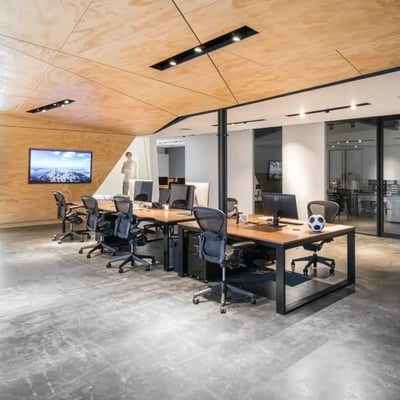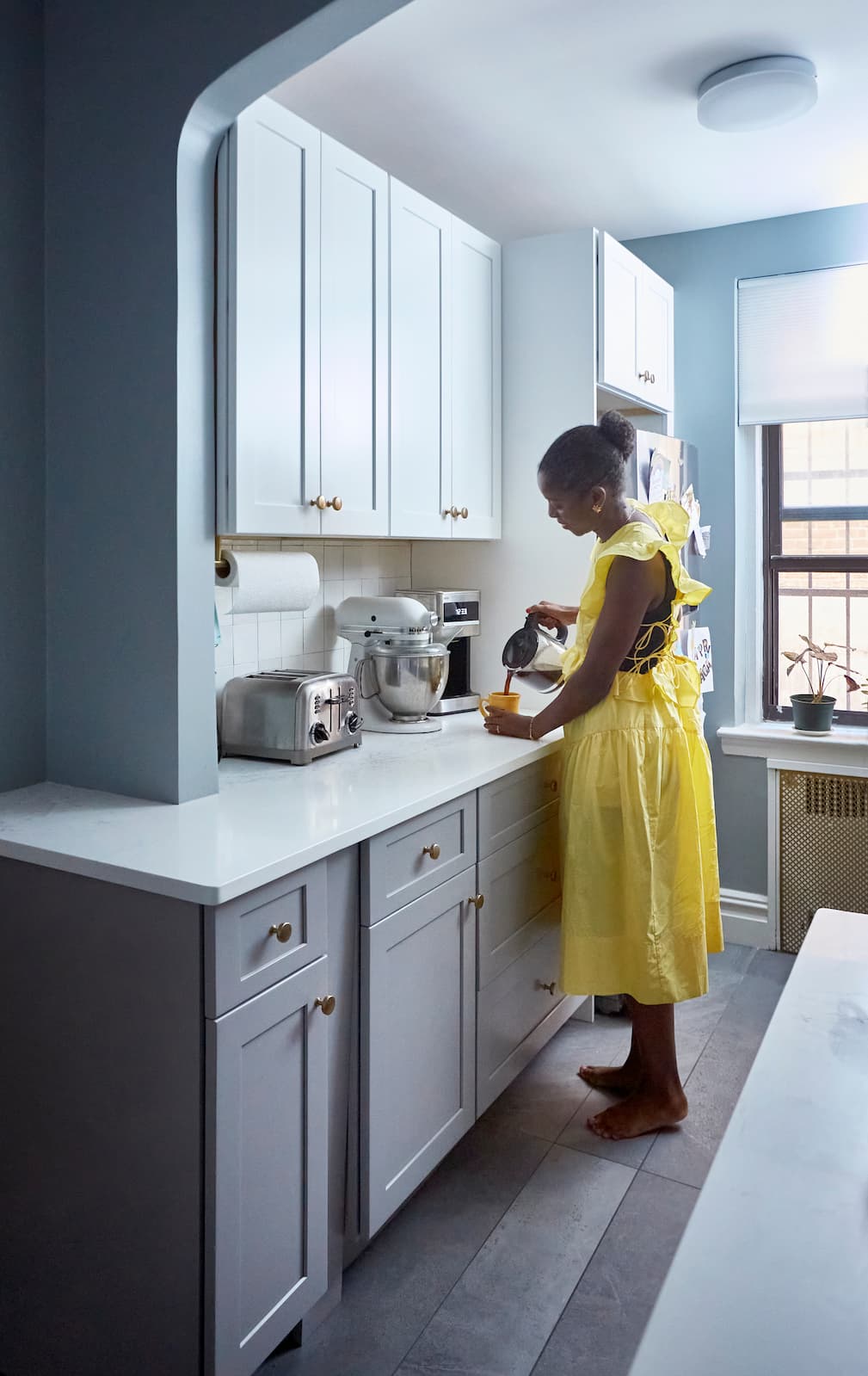Success in today’s convenience store market isn’t just about stocking shelves or securing the right location. The most competitive stores stand out with clear branding, smooth operations, and environments that customers actually want to return to.
Smart design—both inside and out—plays a major role. From layout to lighting to curb appeal, every detail shapes the customer experience and supports long-term loyalty. Whether you’re opening a new store or remodeling an existing one, getting the design right from the start is one of the most powerful ways to set your business apart.
Pre-design considerations
Every successful commercial project begins long before construction. Strategic planning around your brand, customer base, and operational model ensures that your investment in remodeling and design pays off in measurable business improvement.
Your convenience store’s brand
Your brand should echo throughout all interior design and remodel decisions, so it’s important to have a clear understanding of it prior to kicking off any project.
- Define your identity clearly—are you the local healthy stop, the 24-hour essential hub, or an express pit stop focused on speed?
- Curate your color palette and signage for consistency across all touchpoints, inside and out.
- Refine your unique selling proposition: What makes your store irreplaceable? Are you known for fast, friendly service, international snacks, or standout prepared food? All design decisions should reinforce this point of difference.
- Audit your existing brand presence by gathering feedback from staff and loyal customers on what stands out (or what’s missing) versus competitors.
Your customers
Interior design for convenience store environments is only effective if it’s built around a deep understanding of your buyers.
- Study traffic flows, buying patterns, and activity zones—are you serving commuters, families, tourists, or late-night university students?
- Understand cultural, linguistic, and accessibility needs in your area: digital signage, staff language skills, and clear layouts can all play a role.
- Prioritize safety and convenience in every layout choice, anticipating how shoppers will move from entrance to impulse displays to checkout.
The optimal customer experience
A convenience store remodel should clear away anything getting between a shopper and a great visit.
- Identify friction points: Are aisles too narrow at busy times? Does poor visibility or cluttered signage prevent quick product discovery?
- Assess where operational bottlenecks occur—difficult restocking during peak hours, slow checkouts, or blind spots for staff monitoring.
- Conduct a walkthrough at different times of day and week to experience the store as both a customer and a staff member, documenting pain points and highlights.

Remodeling your convenience store's exterior
Your convenience store exterior is the first—and often most critical—chance to signal your value and build trust. Remodeling or repainting the exterior is an opportunity to improve security, accessibility, and total brand recognition.
Accessibility
- Create a striking and clean storefront: Fresh paint, illuminated signage, and well-maintained glass all reinforce professionalism and safety.
- Upgrade exterior lighting: Invest in bright, energy-efficient LED or canopy lighting over doors, walkways, and pumps—improving both nighttime appearance and actual safety.
- Ensure accessible pathways: Maintain clear walkways, curb cuts, and ramps to welcome every customer, including those with mobility needs.
Branding and curb appeal
- Ensure clear, consistent signage: Use high-contrast, well-lit signs featuring your primary branding. Check for local code compliance on sign size and illumination.
- Highlight key offerings: Window decals or small digital boards announcing hot beverages, prepared foods, or lottery can drive engagement before entry.
- Design thoughtful landscaping: Low-maintenance plants, clean hardscaping, and trash-free entryways help create a cared-for look and discourage loitering.
- Use branded elements: Planters, banners, or window wraps are all tools to help extend your identity into the street-facing environment.
Parking, flow, and safety
- Prioritize parking and access: Stripe parking areas clearly, include accessible spaces closest to entry, and consider drive-through or curbside pickup lanes for added convenience.
- Address security and surveillance: Place visible cameras, emergency call boxes, and wide-open sightlines from the street and parking into your front windows or doors.
- Weather protection matters: Install generous overhangs, awnings, or vestibules to shield customers and product displays from sun and rain.
Remodeling your convenience store’s interior
Designing the interior of a convenience store is all about balance. The layout needs to support quick decisions and easy impulse buys, while also making the space safe, clear for customers, and efficient for staff to manage. A thoughtful remodel brings all of that together—helping the store run smoothly without overwhelming the shopper.
Layout and merchandising
- Create clear sightlines from entrance to checkout: Remove tall shelving or poorly-placed countertop equipment that interrupts views; staff should be able to see the entire shop floor for safety and service.
- Design intuitive, flexible aisles: Keep aisles wide enough for two-way foot traffic, carts, or strollers—especially near the beverage wall, grab-and-go, and checkout. Modular shelving can be reconfigured for seasonal resets.
- Integrate impulse zones and feature displays: Place high-margin items (energy drinks, confectionery, electronics) at eye level near checkout, end-caps, or high-traffic crossroads.
Lighting, finishes, and ambiance
- Maximize lighting quality throughout: Install high-CRI LED lighting for crisp visibility, reducing dark corners and supporting a safe vibe. Use accent lighting for new product displays or fresh food zones.
- Design interior lighting to be adaptable: Add programmable, color-changing lighting for seasonal displays or to instantly refresh the mood for overnight hours versus daytime.
- Focus on finishes and materials: Select durable, easy-to-clean flooring and fixtures that can withstand spills and frequent cleaning. Anti-microbial surfaces in restrooms and food prep are a must.

Technology, compliance, and staff efficiency
- Streamline technology and point-of-sale integration: Consider self-checkout, contactless pay, and digital displays visible from the main floor. Hidden cabling and protected device mounts prevent tampering and keep surfaces clear.
- Display regulatory signage and brand messaging with intent: Blend compliance with your overall design language—required postings should be visible but not cluttered.
- Design staff support areas for efficiency: Secure, visible staff stations and well-organized storage or prep zones to allow for quick restocking even during rushes.
- Plan for accessibility and inclusivity: Ensure counter heights, aisles, restrooms, and service points are ADA-compliant and easy for all customers to use.
Bring your convenience store to life with the right contractor from Block Renovation
Even the best concepts for interior design for convenience store spaces and exterior upgrades only succeed when executed with expertise and precision. A seasoned contractor ensures that every element—from lighting to security, finishes to floor plan—serves your operational goals and brand identity.
Block Renovation connects you to rigorously vetted contractors specializing in commercial retail and convenience store remodeling. You’ll receive professional guidance on code compliance, phasing for minimal downtime, transparent budgeting, and ongoing support at every stage. With Block, you can move forward confidently—earning loyal customers and building a convenience store environment that stands out for all the right reasons.

Written by
Block Renovation
Block Renovation personalizes home remodeling with free AI-powered design tools and a vetted contractor network, helping homeowners plan, visualize, and build with confidence.














